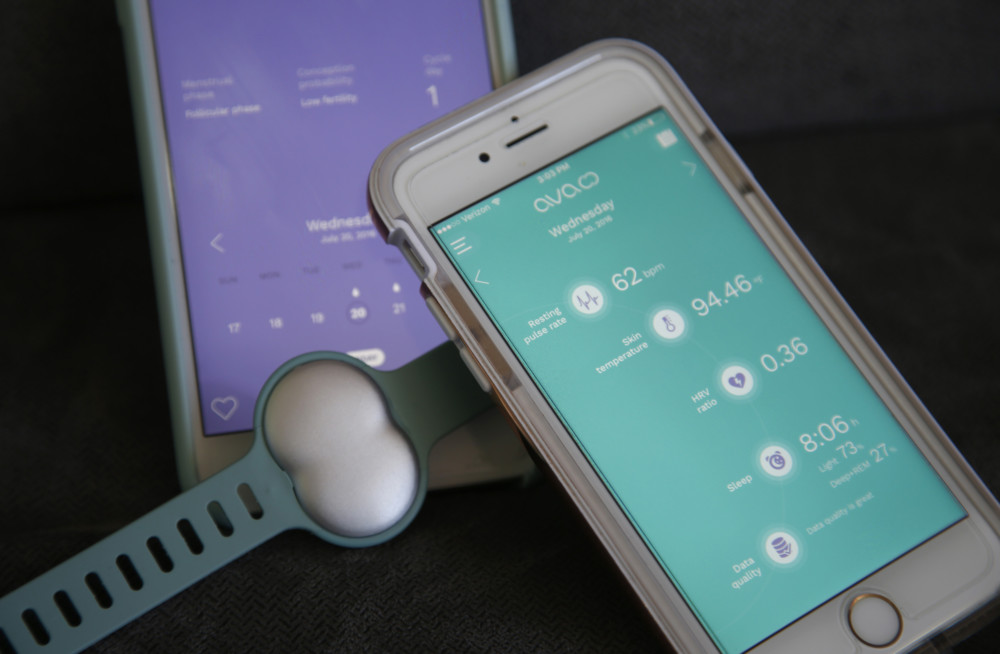By Marisa Kendall
The Mercury News
WWR Article Summary (tl;dr) From urine sticks to fertility apps to special thermometers, women trying to conceive often try multiple methods to improve their odds. Fortunately, these methods continue to improve. Female founded startup “Ava” shipped its first wearable fertility sensors last month. The sensors can be worn as a bracelet to provide detailed information about a woman’s cycle.
SAN JOSE, Calif.
As Silicon Valley technophiles use devices to collect data on everything from how many calories they burn to their fluctuating stress levels and their posture, a group of entrepreneurs is bringing that technology somewhere new, into the bedroom.
For couples trying to get pregnant, failure can be frustrating and heartbreaking.
buy levitra oral jelly online healthcoachmichelle.com/wp-content/themes/twentytwentyone/inc/en/levitra-oral-jelly.html no prescription
Traditional options can seem low-tech, urinate on a stick, take a daily temperature reading or provide a semen sample. Or they are prohibitively expensive and invasive, spend $10,000 to $20,000 on in vitro fertilization.
Now, tapping into what they say is a booming market of want-to-be parents, a number of startups are developing high-tech alternatives that give men and women detailed fertility readings at home.
Lea von Bidder, co-founder of Ava, which shipped its first wearable fertility sensors last month, said the common ways to track fertility don’t cut it for Silicon Valley’s career-driven, tech-savvy women.
“They’re 19th-century methods,” she said. “Nothing happened in this whole field for so many years. We have innovation happening everywhere … and those things just seem so old.”
Ava, based in San Francisco and Switzerland, developed a wristband that uses a woman’s heart rate, temperature, breathing and other metrics to calculate when she can get pregnant each month. Other companies make ear buds, underarm patches and smart oral thermometers that detect the slight body temperature increase that follows ovulation. There are even startups making strides in the often-ignored area of male fertility, such as Sandstone Diagnostics, which is set to ship its first at-home semen testing machines this fall.
Most women have a six-day monthly window when they can get pregnant, and as more women opt to have children later in life, possibly reducing their chances of conception, timing their efforts correctly can become even more important.
Between 2000 and 2014, the proportion of U.S. women waiting to have children until they were 35 or older rose 23 percent, according to the Centers for Disease Control and Prevention. Meanwhile, some research shows men’s sperm count is on the decline. A study of samples donated to a Boston sperm bank between 2003 and 2013 found a drop in sperm concentration of about 4 percent per year, according to a report by the New England Cryogenic Center and Stanford University.
Julie Aksland, 29 of San Francisco, has been trying for a second child off and on since December.
“Every month that you’re not successful, it’s just really frustrating,” she said.
Tired of blindly guessing when she should be trying, Aksland started using urine sticks (they didn’t work), fertility apps (different apps told her to try on different days) and thermometers (daily temperature readings became a hassle while chasing her 2-year-old). So Aksland signed up to be an Ava beta tester. She loves that she can wear the bracelet sensor at night and wake up to detailed information about her cycle.
“It takes a little bit of weight off to have that assistance in this process,” she said.
Another startup hoping to make conception less stressful is San Francisco-based Glow. Women enter information into the app each day, everything from their temperature to their mood, and Glow uses the data to predict their fertile window. Launched out of HVF Labs, PayPal founder Max Levchin’s “umbrella project” for investing in and developing new ideas, Glow is unique in that it also targets men, giving them fertility-boosting tips based on their personal data.
Society tends to view infertility as a woman’s problem, even though the male partner is responsible in about half of cases, said Greg Sommer, co-founder and chief scientific officer of Sandstone Diagnostics.
So Sommer and his team developed Trak, a $159.99 sperm testing device that was approved by the Food and Drug Administration in May. The user puts a few drops of semen into a disposable cartridge and plugs it into the machine, which spins the sample, using centrifugal force to isolate and count sperm cells. Trak then gives the user his sperm count.
For those with lower counts, the accompanying Trak app gives men personalized recommendations, possibly suggesting they lose weight, get more sleep or spend less time with a warm laptop on their laps, Sommer said. The goal is to remove the taboo and make men feel more comfortable addressing their sperm count.
“Fertility is a difficult topic,” Sommer said. “It’s a very painful and private and stressful and difficult thing that couples go through. Even a couple can have trouble talking about it amongst themselves.”
___
Taking stress out of conception
Ava
What: Wrist sensor a woman wears while she sleeps
How it works: Gathers data on nine metrics, including temperature, pulse, breathing and sleep patterns, and calculates five days a month when a woman can conceive
Cost: $199
Availability: First devices shipped in July
Learn more: AvaWomen.com
Trak
What: At-home fertility test for men
How it works: The man inserts a small semen sample and Trak spins it, isolating the sperm cells, and provides a sperm count.
Cost: $159.99
Availability: Scheduled to ship in October
Learn more: TrakFertility.com
Glow
What: Fertility app for men and women
How it works: Couples enter information about their bodies and moods. Glow predicts which days each month a woman will be able to conceive, and for men, Glow provides personalized tips on how to improve fertility.
Cost: Free
Availability: For iOS and Android
Learn more: Glowing.com/glow














































































































































































































































































































































































